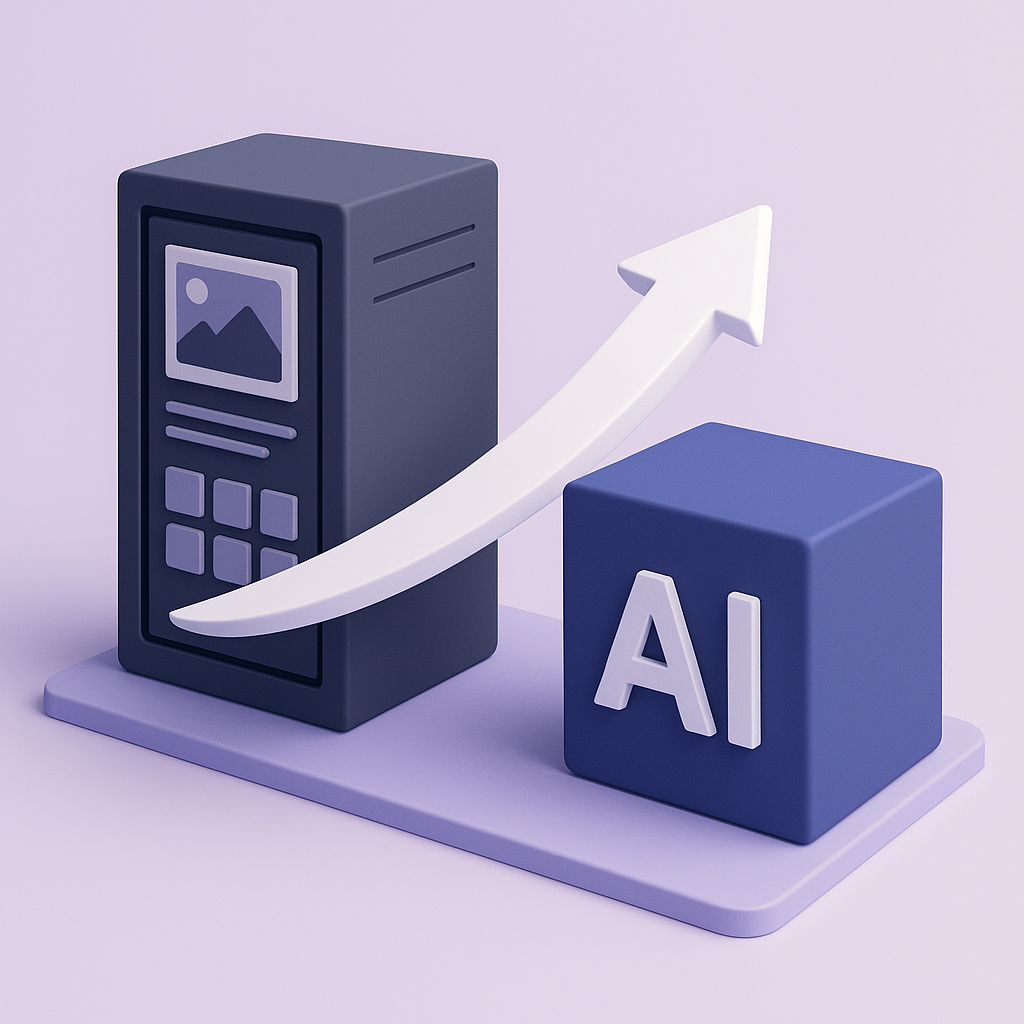Embracing the Future: The Next Evolution of GenAI Integration within Digital Asset Management
This article has been contributed by Taylor Jones, Head of Marketing at imagine.io, as part of our series entitled ‘Will Generative AI Make DAM Obsolete?’
Generative AI is no longer science fiction—it’s a revolutionary power changing the way brands produce, manage, and amplify content. As marketing teams are under mounting pressure to produce faster, smarter, and more personalized experiences, conventional Digital Asset Management (DAM) systems are adapting to the times.
The integration of GenAI into DAM isn’t just a technical upgrade—it’s a strategic shift. By merging structured asset governance with intelligent automation, brands can move beyond static storage and into a new era of dynamic content generation and deployment.
This blog explores how GenAI is redefining the role of DAM, turning it from a back-end repository into a creative engine, and why the future of content marketing depends on this powerful synergy.
Generative AI Doesn’t Replace DAM—It Unlocks Its Next Chapter
 DAM platforms have long served as the foundation for storing, structuring, and governing brand assets across an organization. But even the most well-organized library of silos, lifestyle images, and packaging renders can fall short when new content is needed at speed and scale.
DAM platforms have long served as the foundation for storing, structuring, and governing brand assets across an organization. But even the most well-organized library of silos, lifestyle images, and packaging renders can fall short when new content is needed at speed and scale.
Generative AI for asset creation offers a way to extend the value of what’s already in your DAM, allowing teams to create new visuals, localize existing ones, and accelerate content production timelines dramatically. However, this is only possible because of the structure that DAM provides.
And it goes beyond just asset creation. Generative AI can also help automate tagging, metadata generation, and content classification—turning your DAM into a self-organizing and highly searchable repository. This level of automation not only saves time but ensures greater consistency, accuracy, and discoverability of assets across large enterprises.
How AI and DAM Work Together
1. Reimagining Stored Assets
A standard product image stored in your DAM—like a silo shot or a 3D render—was once just the starting point. Traditionally, creating lifestyle content from these assets meant coordinating new photoshoots or requesting design resources.
Now, AI-powered platforms can instantly transform those same visuals into rich lifestyle imagery, adapt them for various channels, or render them in seasonal themes—all within the same ecosystem. AI unlocks creative possibilities from existing assets, eliminating delays and reducing dependency on external production.
 2. Governance Meets Generative Speed
2. Governance Meets Generative Speed
DAM platforms are essential for maintaining brand consistency and usage rights. When AI-generated content is linked to your DAM—either natively or through integrations—it ensures that new outputs are still tied to approved core assets, while eliminating repetitive creative work. The result: speed without sacrificing control.
Further, by training generative AI models on a brand’s existing asset library, DAM can become the central brain for intelligent content generation, producing on-brand assets that follow established guidelines, tone, and quality standards automatically. 3. Closing the Gap Between Product and Marketing
3. Closing the Gap Between Product and Marketing
Often, assets first enter the DAM through product development—CAD files, early prototypes, or raw renders. By combining DAM storage with AI tools, teams can skip lengthy approval or photography cycles and generate go-to-market content directly from technical files. This accelerates the handoff between product and marketing teams and reduces opportunity cost.
Moreover, when integrated with Product Information Management (PIM) systems, DAM powered by generative AI can instantly produce content variants for different regions, languages, and audience segments—bridging the product-marketing divide even more efficiently.
AI as a Creative Layer on Top of DAM
Generative AI is not going to replace Digital Asset Management; it will improve it. Serving as a creative layer over your DAM, AI takes advantage of the existing structure, metadata, and governance to provide efficient, smart, and brand-aligned content creation.
Rather than begin from scratch, teams can leverage current assets—such as 3D renders or silo shots—to create lifestyle scenes, seasonal versions, and localized images within minutes. AI draws on the DAM’s categorized asset library to produce content that’s specific to the campaign, audience, and channel without deviating from brand guidelines or usage rights.
Such synergy translates to less time in manual production and more time in strategic creativity. AI defers to DAM’s guidelines, operating within set parameters to guarantee outputs are correct, authorized, and compliant with brand guidelines. It’s automation with governance, velocity with management.
By placing AI on top of DAM, brands unlock a scalable, on-demand content engine that keeps up with today’s marketing needs—without giving up consistency, compliance, or creative quality.
The Future is Fully Integrated
As consumer expectations grow, brands need more than isolated tools—they need an ecosystem where creativity and content management work together. The integration of generative AI with Digital Asset Management (DAM) is making that possible.
With AI enhancing DAM workflows, teams can rapidly generate, adapt, and deploy content across channels—all from a centralized, organized asset library. This reduces production time, ensures brand consistency, and supports greater personalization at scale.
Rather than just keeping pace, brands adopting GenAI-enhanced DAM are setting new standards in content agility, efficiency, and audience relevance. The path forward isn’t fragmented—it’s unified, intelligent, and built for the speed of modern marketing.
The Bottom Line
Rather than replacing Digital Asset Management, generative AI is enhancing it—turning DAM from a repository into a launchpad. The next evolution of asset management is not just about storing and retrieving—it’s about dynamically deploying content across markets, channels, and audiences.
The smartest brands aren’t choosing between DAM and AI. They’re using them together to meet the demands of modern content velocity. In this new era, success belongs to those who integrate, automate, and activate—intelligently.
FAQs
Will generative AI eventually replace Digital Asset Management systems?
No. Generative AI enhances DAM rather than replacing it. DAM provides the structured foundation for storing, organizing, and governing digital assets—something AI needs to function effectively.
How does generative AI improve asset searchability in DAM?
By automating metadata tagging and classification. Generative AI can analyze images or videos, generate relevant tags, and categorize assets, making searches more accurate and efficient.
Can AI-generated assets still comply with brand guidelines?
Yes, if integrated with DAM. When generative AI is connected to your DAM system, it can reference approved brand assets and guidelines to create consistent, on-brand visuals.
What types of content can generative AI create within a DAM system?
AI can create images, videos, 3D renders, text, and more. It enables everything from new lifestyle visuals and product variations to personalized marketing assets—all dynamically generated from existing data.
About Taylor Jones
Taylor Jones is the Head of Marketing at imagine.io, a leading platform for AI-powered product visualization and 3D content creation. With deep expertise in eCommerce, digital strategy, and emerging creative technologies, Taylor helps brands scale their visual content pipelines while reducing production time and cost. Learn more at www.imagine.io.
You can connect with Taylor via his LinkedIn profile.
Share this Article:
